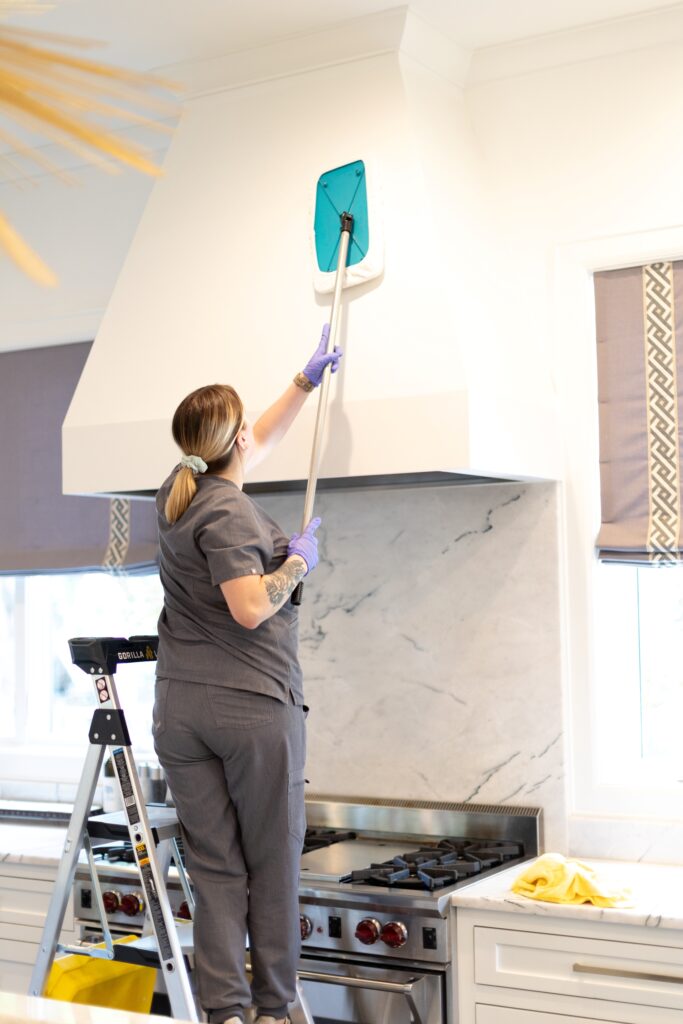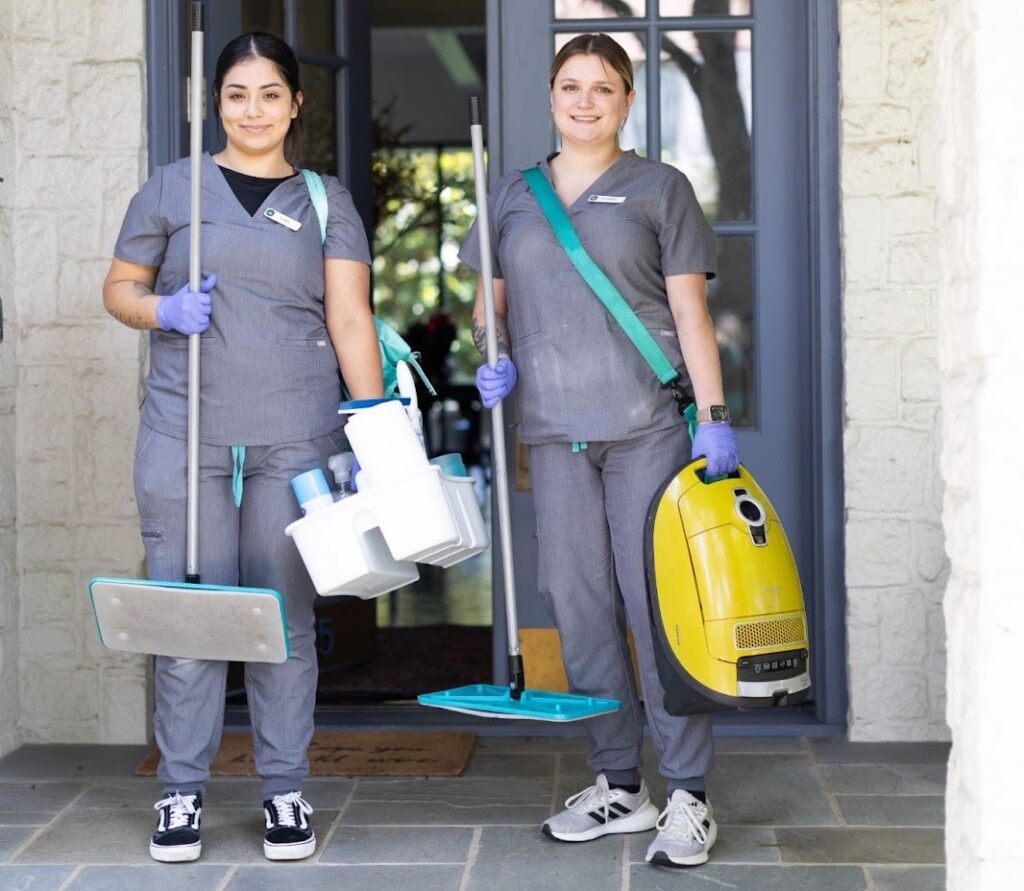Ultimate Chimney Cleaning Guide for a Safer, Greener Kitchen

How long will you allow dirt to settle in your chimney before finally cleaning it? A clogged chimney is not just an eyesore; it poses a great danger to the life of your entire abode. As per the National Fire Protection Association(NFPA), cooking equipment is often the most common reason for home fires. And a dirty kitchen chimney usually plays a hidden role. Eventually, grease collects to clog your chimney, making it inefficient and dangerous.
The good news? You needn’t wait for the disaster. Regular chimney cleaning will stop problems from occurring in the first place. It’s much easier than you might think. From here, we will show you eco-friendly, simple do-it-yourself steps to clean your chimney safely like the experts at Vella.
Simple tips to make your kitchen a little greener and fresher without adding hours to your routine. On that note, let’s get started!
How a Clean Chimney Keeps Your Kitchen Safe
A neat and clean kitchen chimney serves much more than just its aesthetic value. It is safe and comfortable. A chimney clogged with grease, soot, and debris does not work properly. You may see a lot of thick smoke even after cooking, strange smells coming from your vent, and even hear strange sounds from it. More so, that accumulation of grease could be ignited, making that small kitchen mishap into a major fire.
Here are some things that a clean chimney can provide for you:
- Better Air Quality: Less smoke, fewer microparticles in the air, and a fresher-feeling kitchen.
- Reduced Fire Risk: Because grease is highly flammable, keeping it under control will give you a safer house.
- Less Odor: You can say goodbye to that grease-fried smell that clings to everything.
- Longer Appliance Life: Well-cleaned chimneys have to work less, resulting in years added to their lifespan.
Quick Checklist: Signs Your Kitchen Chimney Needs Cleaning
- Smoke fills your kitchen unusually fast
- You smell grease or burnt food even if there is no cooking
- Suction capacity has reduced
- You can see a visible sticky accumulation on the filter or hood.
Do any of these conditions seem familiar? Well, in that case, it’s time to clean.

What You’ll Need for Chimney Cleaning
No fancy equipment is required to have a good cleaning. This is the go-to list:
- Eco-friendly degreaser (like Bon Ami, which is used and trusted by Vella)
- Mild dish soap
- Baking soda and vinegar
- Microfiber cloths
- An old toothbrush for small spaces
- A soft brush or chimney cleaning brush
- Rubber gloves, mask, and safety glasses
- Optional: Vacuum with a HEPA filter (good enough for dust control)
Before doing anything, collect all the supplies you’ll need.
Step-by-Step Guide: How to Clean Your Kitchen Chimney Like a Pro
Here is a step-by-step guide to cleaning your kitchen chimney:
Step 1: Unplugging and Preparing the Surroundings
Unplug the chimney and ensure it is not operational. Lay old towels or newspapers on the floor under your work area. This will save you from cleaning yet another mess afterward!
Step 2: Filters and Grease Traps Removal
Most filters in grease interceptor traps just slide or click out for removal. If in doubt, check the manual. Use gloves here- they will be sticky with grease!
Step 3: Soak Filters in Natural Degreaser Solution
Fill a tub or a big sink with hot water. Add a good amount of mild dish soap and a generous amount of baking soda. If the filters are dirty, add a dash of vinegar too. Soak for 30 to 45 minutes.
Step 4: Scrub Gently
After soaking, scrub gently with a brush or an old toothbrush. Apply more effort to dirty spots. Hold on—it will pay off!
Step 5: Clean the Inside of the Chimney Hood
Mix a little degreaser and warm water. Take a microfiber cloth and dampen it, then wipe the insides and edges. For any hard-to-reach spots, the toothbrush comes in handy.
Step 6: Clean the Chimney Duct (If Accessible)
If reaching the duct is possible, then use a soft brush or HEPA vacuum to clean out loose soot and grease. Do not force it; if it feels difficult, it might damage some parts.
Step 7: Dry and Reinstall Filters
Ensure that you air-dry the filters before reinstalling them. Installing damp parts encourages mildew—and nobody wants that!
Pro Tips to Make Chimney Cleaning Easier & Greener
If you do a lot of cooking or frying regularly, deep-cleaning should ideally be done once a month. Mild use, or very light use, is fine with a cleaning every three to four months.
Use Natural Alternatives
Steer clear of using harsh chemicals for cleaning. Baking soda and vinegar are a mighty combination that is safe and inexpensive. At Vella, we always choose green alternatives for a healthier environment.
Stay Ahead with Preventive Care
- Always cover food in frying pans.
- The hood is to be wiped down every week with a microfiber cloth.
- Minor spills can be cleaned up immediately to prevent long-term damage.
Recognizing When to Request Assistance
Heavy grease in the chimney, burning smells emanating while the chimney is running, and some weird noises suggest that help may be needed. These sorts of repairs are safer and often cheaper than larger repairs down the road.
Troubleshooting Common Chimney Cleaning Issues
At times, grease can be extraordinarily stubborn or might just get stuck! In that case, a paste of baking soda that you make by mixing up some baking soda with a couple of drops of water can be applied. Afterward, let this paste sit on the greasy spots for about 15 minutes, and then scrub with a brush.
If it looks like the stain is on the stubborn side, clean, rinse, and repeat once or maybe even twice. If, after the cleaning, your chimney has that familiar smell, perhaps you might have missed some hidden buildup inside areas like the ductwork. Therefore, a revisit to those areas could be a great idea, or you could get professional deep cleaning just to have a fresh start again!
After the cleaning, if you hear strange noises of rattling sounds, clicking sounds, or the fan running louder than usual, that could mean that any part is loose. If this proves to be the case, discontinue the use of the chimney and get it thoroughly inspected to avoid any further damage.
Frequently Asked Questions About Chimney Cleaning
Q: How long does it take to clean a chimney?
Most times, around 1-2 hours. Depending on how unclean it is.
Q: Is it safe to use baking soda and vinegar to clean anything?
Yes, but avoid electronics and sensitive objects. Use only metal and plastic parts.
Q: Between deep cleanings, how do I keep my chimney?
Wipe down the chimney weekly. Soak filters in warm water and soap monthly.
Q: Do self-cleaning chimneys still require human intervention?
Yes! Self-cleaning models may reduce the buildup, but won’t eliminate it.
Why Choose Vella for Safe, Reliable Chimney Cleaning?
At Vella, we believe that quality care should be available to every home, big or small. Professional experienced cleaners know all the ins and outs of chimney cleaning. Using eco-friendly products, gentle techniques, along a lot of elbow grease, we will help make your kitchen cleaner, safer, and greener.
Whether it is a once-off deep clean or adding chimney cleaning to your kitchen service, we are here for you. Booking is easy through Vella’s website. We offer services across Texas, including Plano and Fort Worth.
Sometimes you just need a fresh start, and that is what we are here to offer, one clean chimney at a time.
Call Vella: Cleaning Made Easy
If chimney cleaning sounds scary to you, don’t worry! After you have learned to do it, it will just become one of the many things you do to care for your home. A few hours spent today can save you from a big headache tomorrow.
A clean chimney ensures a safer kitchen, fresher air, and happier cooking! And it sure feels good to know that while your home is clean from the inside out!
Ready to save some elbow grease? Grab our free kitchen cleaning checklist from Vella or schedule a quick clean with us today. Let’s keep your kitchen bright, shining, and safe!